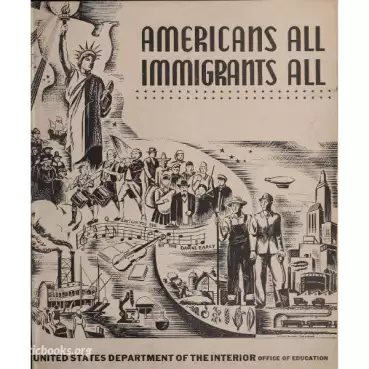
Timeline
Title
Country/Nationality
U. S. Department of the Interior Office of Education
The Office of Education, at times known as the Department of Education and the Bureau of Education, was a small unit in the Federal Government of the United States within the U.S. Department of the Interior from 1867 to 1972.
In 1857, Congressman Morrill introduced a bill for the establishment, through the aid of public land grants, of State colleges throughout the country primarily for the teaching of agriculture and the mechanical arts. On Monday, February 1, 1858, a petition of the Ohio State Board of Agriculture was presented to the Senate "praying that a donation of land be made to each of the States for the establishment of agricultural colleges." Neither of the proposals was accepted until the time of the 16th President, with the Lincoln administration (1861–65), after which it became necessary to gather information on the many schools already in existence, as well as on those being built.
Following the Civil War, shifts in political thought led to increased federal involvement in education. The pre-war tradition of local funding of and control over education clashed with a push from reformers for increased state and federal educational leadership. Additionally, the creation of social science associations generated interest in data-driven approaches to governance at all levels.
The Office was created on March 2, 1867, as the Department of Education, using the same titles as another unit which it superseded. Educator Zalmon Richards was largely responsible for Congress creating the Office. Henry Barnard was appointed as the first United States Commissioner of Education in 1867. On June 30, 1869, the Department lost its independent status and became the Office of Education within the Department of the Interior (and temporarily renamed Bureau of Education from 1870 to 1929, where it would remain until 1939) when transferred to the newly created Federal Security Agency (F.S.A.), in the "New Deal" programs of 32nd President, Franklin D. Roosevelt, until the setting-up of the Presidential Cabinet-level, U.S. Department of Health, Education and Welfare in April 1953, under 33rd President Harry Truman and his newly inaugurated successor, Dwight D. Eisenhower, the 34th chief executive. Barnard's personal book collection, later purchased by the Bureau, was the nucleus of what would become the National Library of Education. Barnard resigned on March 15, 1870, and was replaced by John Eaton who remained Commissioner until 1886. In 1870, the unit began to be called the "Bureau of Education". The Bureau reverted to the original name "Office of Education" in 1929. By 1979, under the administration of 39th President Jimmy Carter, old H.E.W. was split with a continuing Cabinet-level agency of the U. S. Department of Education was set off along with a separate U.S. Department of Health and Human Services, also still in the Cabinet.
In 1972, Public Law 92-318 provided the repeal of the law which had created the Office of Education. The repeal took effect on July 1, 1972.
The Office of Education had a unifying influence on the different educational institutions of the United States, caused by supplying the leaders of the institutions with information that enabled them to know of the practices of other institutions. The direct organizational descendant of the Office of Education is the National Center for Education Statistics (NCES), part of the Institute of Education Sciences in the U.S. Department of Education.
Books by U. S. Department of the Interior Office of Education

Americans All, Immigrants All
The United States Department of the Interior, Office of Education partnered with the Columbia Broadcasting System to present a series of 26 dramatic radio broadcast programs detailing the role of immigrants in the development of the USA. This small v...